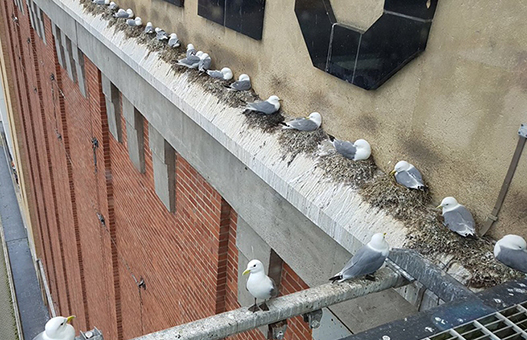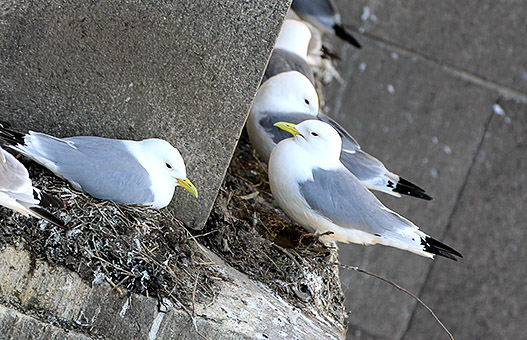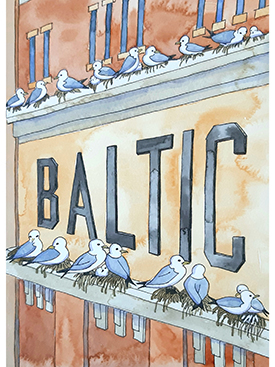Raising Awareness
Why are the Tyne Kittiwakes so important?
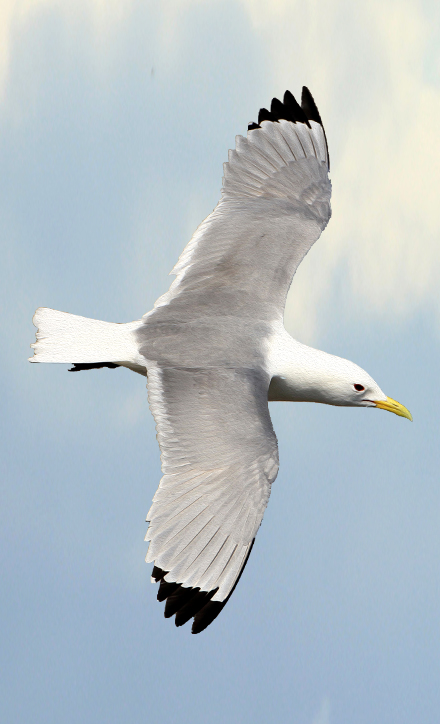
The population of Kittiwakes along the River Tyne are the
Furthest Inland Breeding Colonies of Kittiwakes in the World- The Tyne Kittiwakes are part of Tyneside’s local history and heritage, as Kittiwakes have been nesting along the River Tyne since the 1960s. For many, they have been part of their Spring and Summer months for their whole lives. Inland colonies are also more easily accessible as usually you would need to travel to the coast, where they nest on sea cliffs or offshore islands. So their presence is a valuable opportunity for education and to experience colonies of seabirds up close.
- Kittiwakes are » Red-Listed . Globally the species has declined by 40% since the 1970s. Red is the highest conservation priority with species needing urgent action. There is an increasing need to help safeguard existing birds and secure and protect their nesting sites.
- All species of Gull are protected under the
» Wildlife and Countryside Act 1981
Why are seabird populations declining?
- CLIMATE – Our climate is changing. Temperatures are rising and the world is experiencing weather patterns which are more intense; and these are starting to occur more frequently. Coastal Kittiwake colonies are very much exposed to severe storms, especially those which involve strong winds and higher levels of rainfall.
- FOOD – Like we have seen with agriculture, the fishing industry has become more efficient. With the benefit of more modern technology and equipment, they are able to extract larger quantities of fish etc. In the North Sea, Sand eels are an important food source for bird populations such as Kittiwakes and due to overfishing, stocks are at an all-time low. Also, as our climate warms, so will our oceans and seas, which will change aquatic ecosystems.
- POLLUTION – Despite political ambition, and pressure from wildlife organisations and the public, the North Sea and the
River Tyne continues to suffer from pollution on a damaging scale.
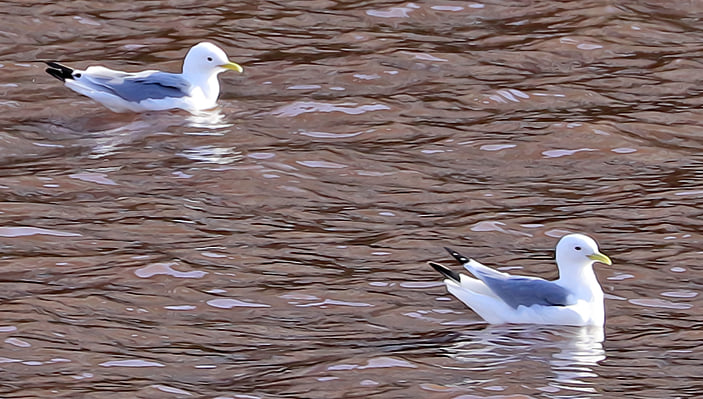
Kittiwakes relaxing on the River Tyne by Paul Buskin
As our climate continues to change the chances of further pollution being deposited into our rivers and seas, may rise as episodes of high rainfall could occur more frequently and aggressively, which could potentially become even more damaging. This could also unsettle existing pollution that exists deeper from previous heavy industry.
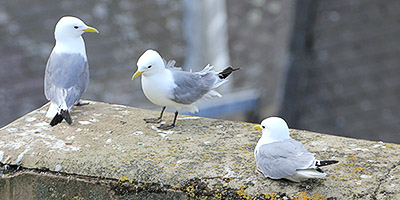
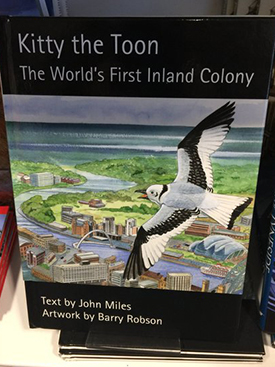
The Worlds First Inland Colony
Text by John Miles
Artwork by Barry Robson
Amazingly illustrated, ‘Kitty the Toon’, tells the story of Kitty the Kittiwake. Newcastle hosts the furthest inland colony of Kittiwakes. This story follows a pair as they nest in the city, have babies, enjoy a game of football and head back out to sea. A great edition to any wildlife library.’
Return of Kitty the Toon
Text by John Miles
Artwork by Sarah Farooqi
Return of Kitty the Toon was published April 2020, with artwork by local artist » Sarah Farooqi To purchase both books by John Miles please visit
» Chick Books – Reconnecting Children with Nature Here you can also find many more fantastic books by John Miles – Reconnecting Children with Nature.
Helping to support Kittiwake Colonies throughout the UK and beyond
A new national website for Kittiwakes – Launched March 2025
Kittiwakes.org shares information regarding a selection of breeding colonies of Kittiwakes within the UK and beyond. There is a focus on such colonies where pairs have moved away from building their nests amongst traditional coastal sites and have instead opted to move into our towns and cities.
Our nature is in crisis!
If larger portions of Kittiwakes continue to move away from their coastal colonies and instead choose to nest more inland, then the need to raise the flag and campaign to help support them will rise. Kittiwakes are also just one species amongst many that are struggling at this time. Not just with more severe weather patterns, access to food sources and pollution; but also, with » Avian Flu























